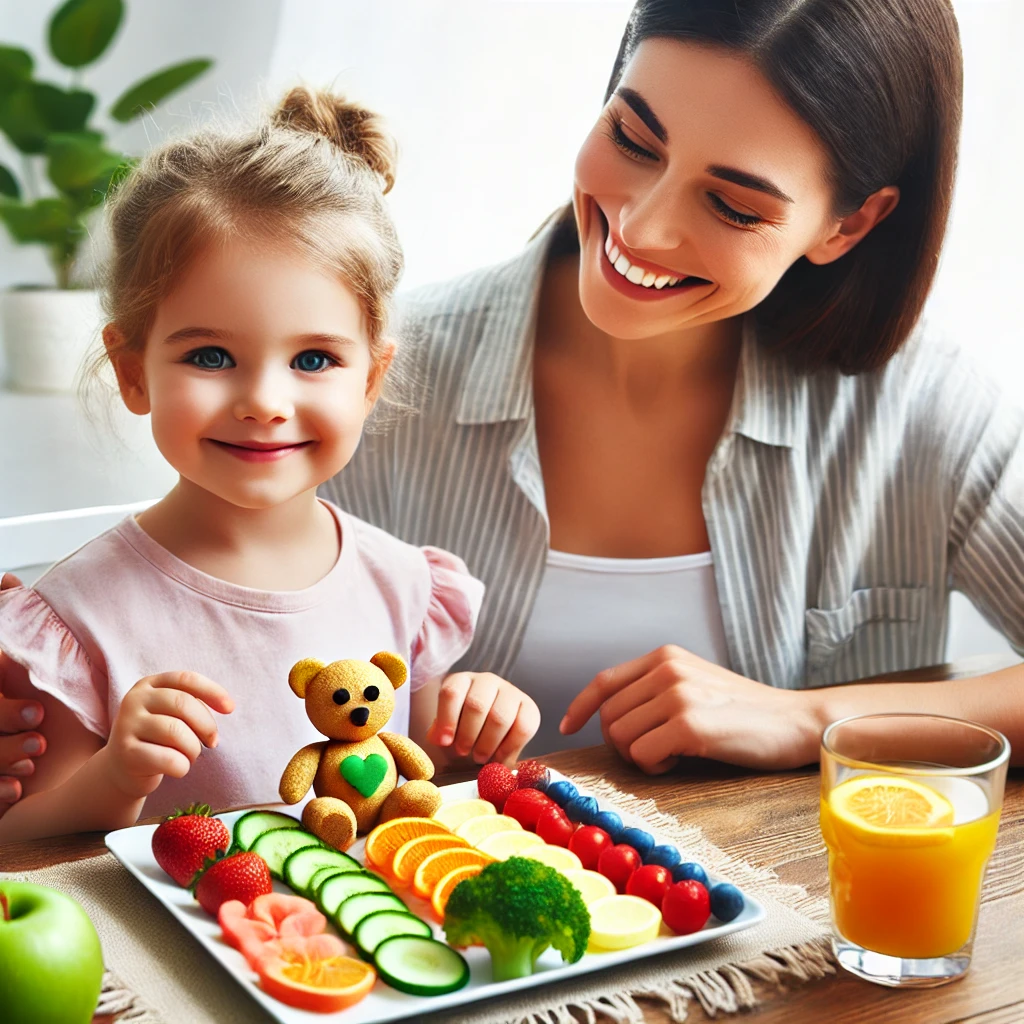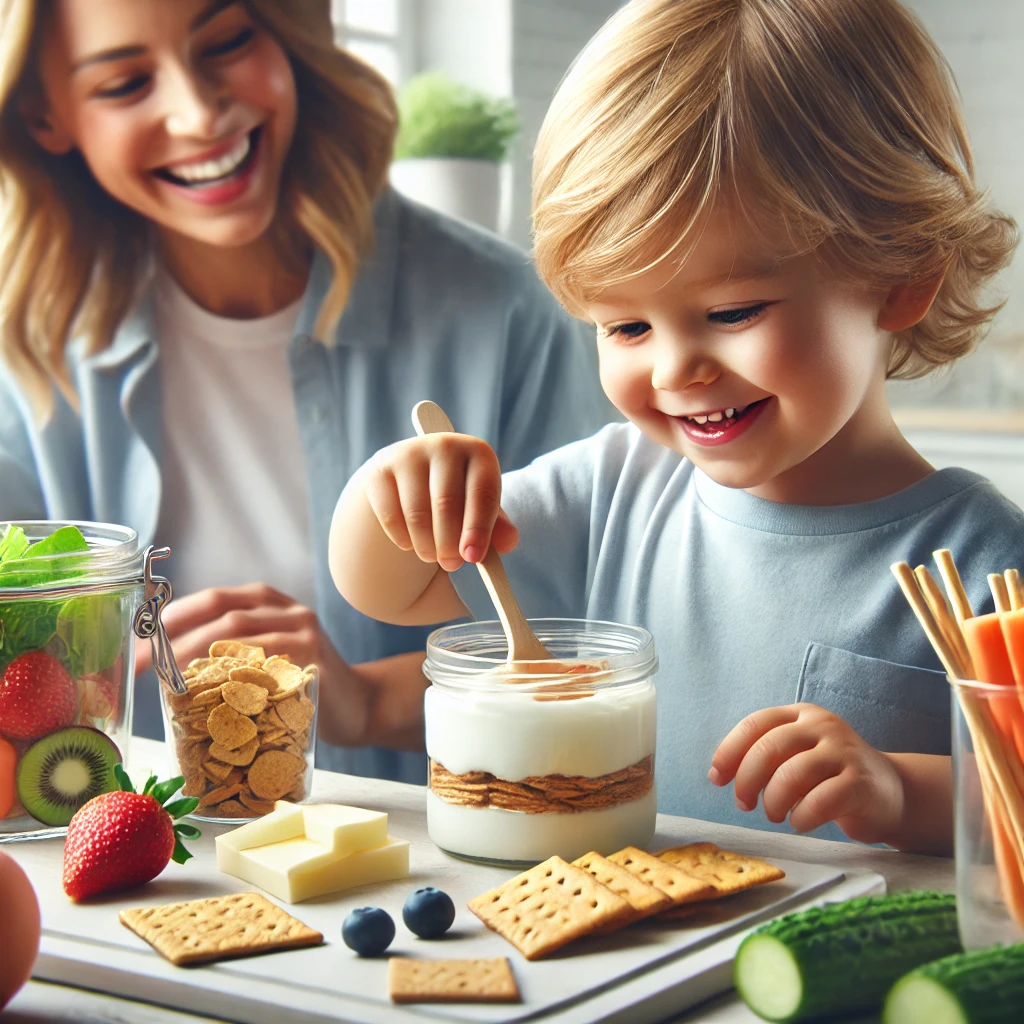Balanced Diet for Preschoolers: What Every Parent Should Know
Why a Balanced Diet Matters
A child’s early years are crucial for growth, brain development, and overall well-being. During this stage, children experience rapid physical and cognitive development, requiring essential nutrients to support their energy levels, immune system, and learning abilities.
A well-balanced diet ensures that preschoolers receive the right mix of proteins, carbohydrates, healthy fats, vitamins, and minerals. Proper nutrition at this stage sets the foundation for healthy eating habits in the future, reducing the risk of obesity, diabetes, and nutritional deficiencies.

Essential Nutrients for Preschoolers
To promote optimal growth and development, preschoolers need a variety of nutrients, including:
1. Proteins – Supports muscle and tissue growth
- Sources: Eggs, milk, yogurt, cheese, lentils, beans, tofu, chicken, and fish.
2. Carbohydrates – Provides energy for daily activities
- Sources: Whole grains (brown rice, whole wheat bread, oats), fruits, vegetables, and legumes.
3. Healthy Fats – Essential for brain development and overall health
- Sources: Nuts, seeds, avocados, olive oil, ghee, and fatty fish like salmon.
4. Vitamins & Minerals – Strengthens immunity, supports bone health, and enhances cognitive functions
- Sources:
- Vitamin A (carrots, sweet potatoes, spinach) – good for eyesight.
- Vitamin C (citrus fruits, bell peppers, strawberries) – boosts immunity.
- Calcium (milk, cheese, yogurt) – strengthens bones and teeth.
- Iron (green leafy vegetables, lentils, nuts) – prevents anemia and supports brain function.
5. Fiber – Aids digestion and prevents constipation
- Sources: Fruits, vegetables, whole grains, beans, and nuts.
Healthy Meal Plan for Preschoolers
A well-planned meal schedule helps children get their required nutrients throughout the day. Here is a simple and nutritious meal plan:
Breakfast:
- Whole wheat toast with peanut butter & banana slices.
- A glass of milk or fresh fruit smoothie.
Morning Snack:
- Yogurt with chopped fruits and a handful of nuts.
- Whole grain crackers with cheese.
Lunch:
- Dal, rice, and mixed vegetable curry.
- A bowl of cucumber and tomato salad.
Evening Snack:
- Cheese cubes and cucumber sticks.
- A homemade smoothie or fruit bowl.
Dinner:
- Roti with paneer sabzi and a glass of warm milk.
- Lentil soup with whole wheat bread.
Tips for Encouraging Healthy Eating Habits in Preschoolers
1. Make Meals Colorful and Fun
Children are more likely to eat a meal when it is visually appealing. Use colorful fruits and vegetables to make their plates exciting.
2. Involve Kids in Meal Preparation
Let your child participate in grocery shopping, washing vegetables, or stirring ingredients. This makes them more interested in trying new foods.
3. Offer a Variety of Foods
Introduce different textures and flavors so children can develop a diverse palate.
4. Set a Good Example
Kids learn by watching. If parents eat healthy foods, children are more likely to follow.
5. Avoid Force-Feeding
Encourage children to try new foods but never force them. Repeated exposure to a food item helps them accept it over time.
6. Maintain a Routine
Offer meals and snacks at the same time every day to establish a regular eating pattern.
Fun Diet Activity for Kids: The Colorful Plate Challenge
Making healthy eating fun can help children develop a positive relationship with food. Try this engaging activity:
The Colorful Plate Challenge
Goal: Encourage kids to include at least three different colors of fruits or vegetables on their plate at every meal.
How to Play:
- Explain to your child that different colors of fruits and vegetables provide different health benefits.
- Ask them to choose three or more colors to add to their meal.
- Reward them with a sticker or small prize for every colorful meal they create.
- Keep a chart for a week to track progress and celebrate their efforts with a fun, healthy treat.
Color Guide for Kids:
- Red: Tomatoes, strawberries, watermelon (Good for heart health)
- Orange: Carrots, oranges, sweet potatoes (Good for vision and immunity)
- Yellow: Bananas, bell peppers, corn (Boosts energy)
- Green: Spinach, broccoli, cucumbers (Strengthens bones and immunity)
- Blue/Purple: Blueberries, grapes, eggplant (Supports brain function)
Final Thoughts
A balanced diet plays a vital role in the growth and development of preschoolers. Providing a variety of nutritious foods, maintaining a structured meal schedule, and making mealtime fun can help establish lifelong healthy eating habits. Parents and caregivers must be patient and creative in encouraging children to enjoy healthy meals without pressure.
By incorporating a colorful and diverse range of foods, parents can ensure their little ones receive all the essential nutrients they need to grow, learn, and thrive!


